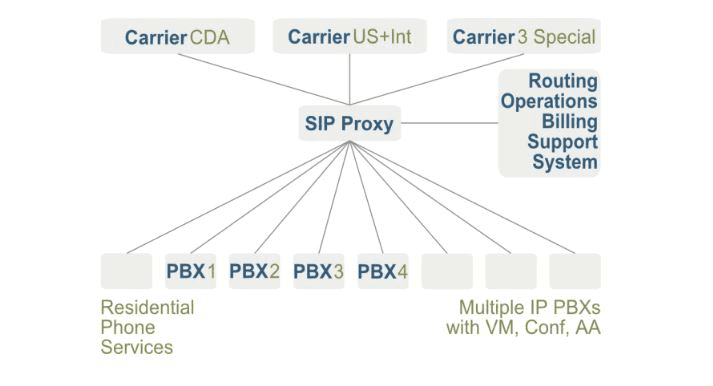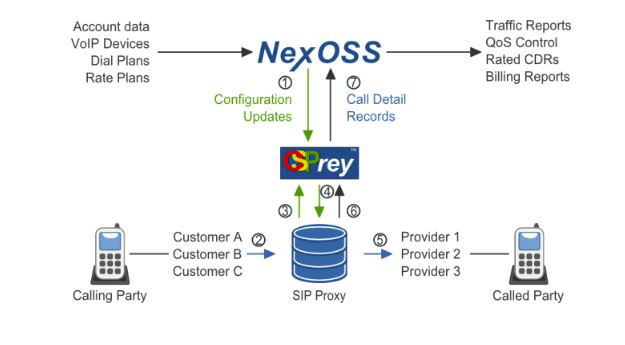RapidTel saves on switching costs with NexOSS
The Challenge
RapidTel came to TransNexus to find a solution to replace their outdated legacy softswitch, which had become too expensive to run and maintain, especially using outdated TDM connectivity. They needed a solution that would allow them to offer least cost routing to their customers.
Result
Today RapidTel can support a dynamic routing table with over 50 million destinations, ensuring that each call route is optimized for profitability. The TransNexus solution also provides much more flexibility in routing than the legacy softswitch.
Customer Take Away
“Overall, Our TransNexus solution brought our operating costs down tremendously. I would estimate that this software has saved us over 50-60% over our legacy costs. This technology has given us the opportunity to pass savings directly to our customers.”
About RapidTel
Rapidtel is a full service Canadian telecom company that supplies low-cost, high-quality SIP trunking and direct inward dial (DID) services for residential and business customers. RapidTel’s primary services include long distance, per minute and flat rate mobile calling, plans, local line phone service using VOIP, and high speed DSL internet connections. Based in Ontario, RapidTel has been a leader in Canadian telecom since 1999.
The Challenge
RapidTel came to TransNexus to find a solution to replace their outdated legacy softswitch, which had become too expensive to run and maintain, especially using outdated TDM connectivity. RapidTel needed a solution that would allow them to offer least cost routing to their SIP provider customers.
“We wanted to move to 100% next generation SIP routing,” said Sam Sharkawy, lead engineer at RapidTel. “We met TransNexus at MetaSwitch forums in the past and they came to mind right away when we decided to look for solutions to our core switching problem.”
The Solution
RapidTel’s requirements were to replace their legacy softswitch with redundant SIP proxies. The OpenSIPS SIP proxy was selected because it is open source software with widespread recognition for reliability and scalability. The TransNexus solution was deployed with the SIP proxies to provide a complete solution for RapidTel’s SIP trunking and DID services.

NexOSS provides a suite of applications for dynamic least cost and quality of service routing, number portability, fraud detection, traffic reports, alarms, billing, and profitability analysis. By moving from an outdated softswitch to a next generation SIP solution, RapidTel was able to gain increased routing capabilities, flexibility, billing solutions, and a significant cost savings.
During an evaluation period, RapidTel completely replaced their legacy softswitch with the SIP proxies and the TransNexus OSPrey routing server. RapidTel’s legacy softswitch was not capable of supporting a large least cost routing table. Today, with OSPrey, RapidTel can support a dynamic routing table with over 50 million destinations, ensuring that each call route is optimized for profitability. The TransNexus software also provides much more flexibility in routing than the legacy softswitch. “Now we can route between different carriers with the flick of a switch,” said Sharkawy.
In addition to the routing features, RapidTel realized the benefits of working with the NexOSS centralized suite of applications for managing VoIP traffic. RapidTel operators use the NexOSS web interface for provisioning Accounts, Devices, Rate Plans, Routing and Number Translation policies and for viewing QoS, Traffic and Billing reports.
How It Works
NexOSS can be deployed with any SIP enabled softswitch, Session Border Controller, or SIP proxy.

- Routing table created in NexOSS and replicated to OSPrey routing and CDR collection server.
- Inbound call to SIP proxy.
- SIP proxy sends a route query (OSP Authorization Request) to OSPrey.
- OSPrey queries the ported number database to get the routing number (LRN) for the dialed telephone number. This feature is optional.
- SIP Proxy completes call to destination.
- SIP Proxy sends OSP Usage Indication (CDR) to OSPrey.
- NexOSS collects CDR files from OSPrey every 1 to 5 minutes (this is configurable).
The Results
“Overall, Our TransNexus solution brought our operating costs down tremendously,” said Joe DeSousa, president and owner of RapidTel. “I would estimate that this software has saved us over 50-60% over our legacy costs. This technology has given us the opportunity to pass savings directly to our customers.”
Adding to these savings, RapidTel chose to deploy the system as a distributed cloud solution. By moving the TransNexus infrastructure to the cloud, RapidTel has been able to drop the expenses of colocation facilities. “Switching to a solution that we could deploy in the cloud entails huge savings for us in monthly recurring fees for hydropower and rack space,” said DeSousa.
“The TransNexus team, with more than fifteen years of experience in VoIP networks, brought a deep level of understanding to this project,” said Dalton. “Our system seamlessly integrates SIP routing with complete network management to effectively address RapidTel’s needs.”
